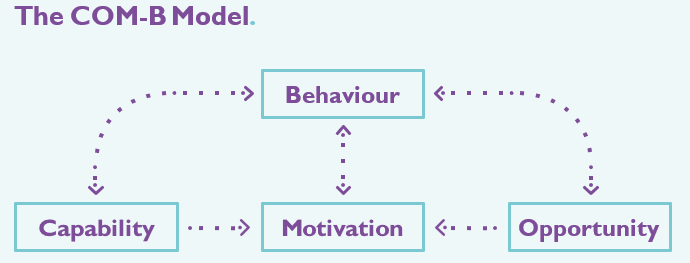The COM-B model proposes that there are three components to any Behaviour (B): Capability (C), Opportunity (O), and Motivation (M).
There are a number of models of behaviour, each one designed to help us better understand what drives behaviour and how decisions are made. Having this knowledge is key when trying to facilitate behaviour change. If we do not understand behaviour, how can we know what it takes to change it?
The COM-B model provides insight into three components, which it suggests play a pivotal role in producing, and therefore changing, behaviour. This guide explains what this model is, its three components, and how it can change behaviour.
The COM-B model proposes that there are three components to any Behaviour (B): Capability (C), Opportunity (O) and Motivation (M).
In order to perform a particular behaviour, one must feel they are both psychologically and physically able to do so (C), have the social and physical opportunity for the behaviour (O), and want or need to carry out the behaviour more than other competing behaviours (M). As each of these components interact, interventions must target one or more of these in order to deliver and maintain effective behaviour change.
The COM-B model is an appropriate starting point for any social marketing campaign, as it provides insight into the determinants of behaviour and how changes to these can encourage changes in behaviour. Once this model has been used to understand what needs to be altered to facilitate behaviour change, it would be beneficial to use the Behaviour Change Wheel (BCW) to understand how this may be possible.

